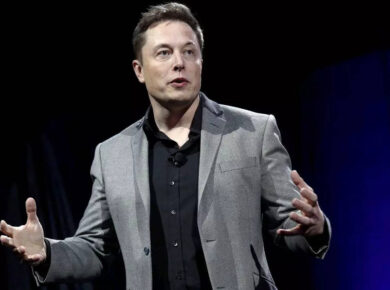🌎 Global Climate Action: The Urgent Call for a Sustainable Future
In 2025, Global Climate Action has never been more critical. The escalating environmental crises caused by climate change threaten ecosystems, economies, and human lives worldwide. Rising temperatures, melting ice caps, extreme weather events, and biodiversity loss are stark reminders of the consequences of inaction. Today, governments, organizations, and communities are recognizing that coordinated global efforts are vital to slow down and ultimately reverse these trends. This article explores why Global Climate Action is imperative, the challenges that persist, the progress made, and the path forward to securing a sustainable future for the planet.
🌱 Understanding the Need for Global Climate Action
The effects of climate change are no longer distant warnings—they are happening now. The year 2025 finds the world grappling with:
-
Increased average global temperatures exceeding the 1.1°C rise since pre-industrial times.
-
Rising sea levels threatening coastal cities and small island nations.
-
Intensified droughts, floods, and storms disrupting lives and economies.
-
Loss of biodiversity, with many species facing extinction.
According to the Intergovernmental Panel on Climate Change (IPCC), if current trends continue, the global average temperature could rise beyond 2°C by the end of the century, triggering irreversible damage.
The urgency of Global Climate Action stems from the need to limit warming to 1.5°C, a target agreed upon internationally, to avoid catastrophic impacts on health, food security, water availability, and livelihoods—especially for the most vulnerable populations.
🔥 Major Challenges Hindering Climate Progress
Despite growing awareness, numerous barriers obstruct effective global climate action:
-
Political Fragmentation: Nations vary widely in their commitment levels, with some reluctant to take strong action due to economic or geopolitical concerns.
-
Financial Constraints: Developing countries often lack the funding needed to invest in clean technologies or adapt to climate impacts.
-
Economic Dependencies: Fossil fuel industries and carbon-intensive sectors remain powerful, slowing the transition to renewables.
-
Technological Gaps: While innovations exist, scaling them globally requires infrastructure and knowledge transfer.
-
Social Inequality: Climate change disproportionately affects marginalized groups, yet many climate policies overlook social justice.
Overcoming these challenges requires a holistic approach that balances environmental goals with economic development and social equity.
🌐 Recent Milestones in International Climate Initiatives
The global community has made notable strides in climate governance in recent years:
-
Paris Agreement Enhancements: Countries have updated their Nationally Determined Contributions (NDCs) to set more ambitious emissions reduction targets.
-
COP Summits and Climate Dialogues: Annual Conferences of Parties have focused on implementing commitments, with increased emphasis on transparency and accountability.
-
Climate Finance Boost: Developed nations pledged to mobilize $100 billion annually to support developing countries in mitigation and adaptation efforts.
-
Renewable Energy Expansion: Investments in solar, wind, and battery storage have surged, making clean energy more accessible and affordable.
-
Net Zero Commitments: Over 130 countries have committed to achieving net-zero emissions by mid-century, signaling long-term climate responsibility.
These milestones highlight the collective recognition of the climate crisis and the willingness to act—though actual implementation remains critical.
⚙️ Technological Innovations Driving Climate Solutions
Technological advancement is the backbone of scalable climate solutions:
-
Renewable Energy Breakthroughs: Solar panels have become significantly more efficient, and offshore wind farms are generating record amounts of clean electricity.
-
Carbon Capture and Storage (CCS): New methods capture CO₂ emissions directly from the atmosphere or industrial sources, offering a way to reduce legacy emissions.
-
Electric Vehicles (EVs): The rapid adoption of EVs reduces reliance on fossil fuels in transportation, one of the largest sources of emissions.
-
Smart Agriculture: Precision farming uses sensors and AI to optimize water use and reduce chemical fertilizers, cutting emissions and improving yields.
-
Green Hydrogen: Emerging as a clean fuel alternative, green hydrogen can decarbonize heavy industries and long-haul transport.
Harnessing these technologies globally is essential to achieving Global Climate Action goals.
🌍 The Role of Governments and Civil Society in Climate Action
Climate action is a shared responsibility:
-
Governments: Must enact strong policies, set binding emission targets, and create incentives for green investments. They are also responsible for ensuring climate justice and supporting vulnerable communities.
-
Businesses: Corporations play a crucial role by adopting sustainable practices, investing in clean technologies, and innovating eco-friendly products.
-
Civil Society: Non-governmental organizations, activists, and grassroots movements raise awareness, push for accountability, and promote behavioral changes.
-
Individuals: Lifestyle choices such as reducing waste, conserving energy, and advocating for policy changes contribute to the collective effort.
Only through inclusive partnerships can the scale of climate challenges be addressed effectively.
🔎 Looking Ahead: The Path to Effective Global Climate Action
Moving forward, the world must:
-
Accelerate Ambition: Countries need to update and enhance their climate pledges regularly, aligned with science-based targets.
-
Scale Climate Finance: Mobilizing trillions in public and private investments is vital to fund clean energy, infrastructure, and adaptation projects.
-
Promote Technology Transfer: Sharing innovations with developing nations enables global progress and equity.
-
Build Resilience: Supporting vulnerable communities in adapting to climate impacts reduces human suffering and economic loss.
-
Ensure Climate Justice: Policies must be inclusive, protecting marginalized groups and addressing inequalities exacerbated by climate change.
In sum, Global Climate Action is a multifaceted endeavor that requires sustained political will, innovative solutions, and collaboration across all sectors of society.
Conclusion
The year 2025 stands as a decisive moment for Global Climate Action. The scientific consensus is clear: urgent and comprehensive steps are needed to protect the planet’s future. While progress has been made, much work remains to translate commitments into impactful actions that will preserve ecosystems, secure economies, and uphold human rights.
This challenge transcends borders and generations, calling for bold leadership, innovative technologies, and inclusive cooperation. By embracing this shared responsibility, humanity can chart a course toward a sustainable, resilient, and prosperous world.
For more updates, explore the Current News. Feel free to share your thoughts and comments.
If you’re passionate about building a successful blogging website, check out this helpful guide at Coding Tag – How to Start a Successful Blog. It offers practical steps and expert tips to kickstart your blogging journey!






